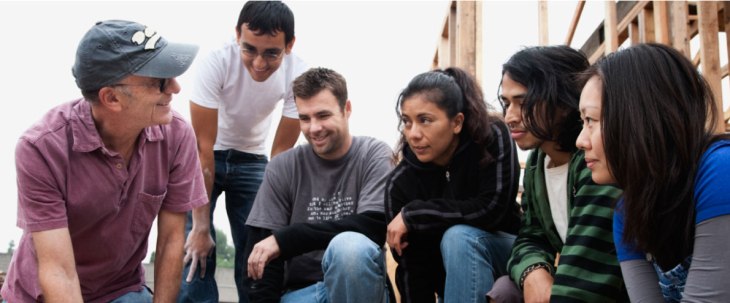Fifth-generation San Franciscan and Salesforce CEO Marc Benioff has been a big proponent of civic engagement and philanthropy among the tech industry.
To that end, when he started Salesforce, he set aside 1 percent of the company’s equity for philanthropic donations, 1 percent of employee time for volunteership and 1 percent of products or services to give away to nonprofits. That has evolved into the “1-1-1” model that he and Suzanne DiBianca, the head of Salesforce’s foundation, are trying to encourage other tech companies to copy.
Last year, DiBianca and Salesforce unveiled a program called “Pledge 1%” that helps startups make a similar commitment to what Salesforce did (although they can adapt it to their own needs.) The Pledge 1% effort assists startups with setting up the paperwork and figuring out how and where to do philanthropic work. More than 200 companies have signed up, including Yelp and Optimizely.
Now they’re bringing it to the East Coast with the Robin Hood Foundation, a nonprofit that oversees $140 million in spending every year on poverty and low-income communities in New York. General Assembly, Javelin and Guggenheim Partners are among the first organizations that have taken the pledge from New York.
“When I talk to startup founders about doing this, my reasons are A) employees are demanding it B) corporations should be accountable to all stakeholders and C) because it’s a great legacy for CEOs who are building a company to create something bigger,” DiBianca said.
She added that the Pledge 1% program has models that work for companies at all different stages. At an early stage, it’s pretty easy to set aside 1 percent of equity and write it into company bylaws. But as a startup scales and goes into later venture rounds, there’s more complexity in figuring out how to work with investors and the cap table.
But she stressed that it’s better to do it earlier rather later so that it is institutionalized into the company culture. San Francisco-based Zendesk, for example, has long used local volunteering in the city and the neighboring area of the Tenderloin as a way to attract and retain mission-driven employees.
“It’s not impossible, but you really need to work with your VCs at the B or C round,” DiBianca said. “You need to be a courageous CEO and make it happen.”
Pledge 1%’s partner in New York, the Robin Hood Foundation, touts a metrics-based approach that examines the long-term financial benefits of different types of intervention, from giving additional funds to primary school classrooms to providing legal services to women.
“Private philanthropy should be risk capital,” said Claire Chamberlain, the managing director of development for Robin Hood. “If it’s successful, then you can put it before other private funders or before city, state or federal policy makers.”
The organization, which has been operating in New York since the 1980s, was one of the first to test some needle exchange programs at the height of the AIDS crisis when it wasn’t politically palatable for the city government to do so. When they were able to prove the efficacy of this approach, the municipal government later took it on.
Of course, doing corporate versus individual philanthropy is a subject of debate.
Warren Buffett, the legendary investor and billionaire who took the Giving Pledge alongside Bill and Melinda Gates and Mark Zuckerberg, has said he shies away from the corporate model because he has an ultimate responsibility to shareholders with corporate funds. (Berkshire Hathaway used to have a shareholder-designated contributions fund for many years until it was shut down more than a decade ago.)
On the other hand, just because donors have done well in the private sector, it doesn’t mean that they are well-equipped to handle the messiness and complexity of public policy, education reform or any number of other causes.
Several of tech’s newly minted billionaires have put their money aside into donor-advised funds at the Silicon Valley Community Foundation, which ballooned from $4.7 billion in 2013 to $6.7 billion last year because of some key donations from WhatsApp co-founder Jan Koum and GoPro CEO Nicholas Woodman.
But donor-advised funds are essentially charitable bank accounts with preferential tax treatments that have yet to be allocated. While they do reflect an upfront commitment to philanthropy at a younger age, it doesn’t mean that money is being used (yet).
“People are just redoing the old model, where you give 5 percent a year. We think you need to put your money to work now,” DiBianca said. “We don’t like this approach of saying you’re going to give away half your wealth, and then it just sits in a charitable account somewhere and doesn’t go anywhere.”
